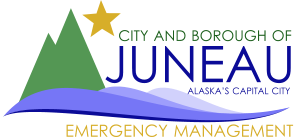Avalanche Advisory Archive Pre-2016
| Date Issued: | 2014-01-06 |
|---|---|
| Danger: | 3 |
| Trend: | 3 |
| Probability: | 0 |
| Size: | 3 |
| Problem: | 0 |
| Discussion: | The National Weather Service Forecasts- TODAY...RAIN...MIXED WITH SNOW IN THE MORNING. LITTLE OR NO SNOW ACCUMULATION. SNOW LEVEL RISING TO 800 FEET IN THE AFTERNOON. HIGHS AROUND 38. EAST WIND 5 TO 15 MPH. TONIGHT...RAIN. SNOW LEVEL 800 FEET. LOWS AROUND 34. EAST WIND TO 10 MPH. TUESDAY...RAIN. HIGHS AROUND 38. SOUTHEAST WIND 10 MPH. Temperatures have climbed by 3c over the last 24 hours putting them just above freezing at the Mt Roberts Tram Summit. The Eaglecrest summit remains barely below freezing although it too has risen by 3c in the last 24 hours. We received 40mm of precip in the last 36 hours, 35mm of which came in the last 24 hours. This left 30cm of new snow at the Mt Roberts Tram Summit. 30cm of snow for 40mm of water is fairly dense snow. We can assume at higher elevations on Mt Juneau and on Douglas Island we received additional snow volumes. That is about a foot of new snow in 24 hours which is a red flag indicator of building avalanche conditions. Also the temperatures rising past is a red flag indicator. Especially at elevations where it rose to above the freezing point. Winds ranged from 15-40mph even gusting higher on Douglas. This creates considerable windloading during a big snowfall event like we had in the last 24. Remembering windloading can move and deposit snow even faster than it falls from the sky we can assume this is another red flag indicator of building avalanche conditions on the leeward slopes. Channel winds on Mt Roberts showed our traditional SSE while Douglas Island was showing more of a SW wind. You can assume slopes facing anywhere from NE-NW have a fair amount of windloading on them. Although the windloading is definitely an issue it is important that for this event we not downplay the volumes of new snow and the increase in temps during the event. Todays avalanche problem is primarily new storm slab snow. Recent tests have revealed additional weak layers in the snowpack in places due to a small rain crust and some faceting that occurred right after Christmas. So even though the new snow is the primary concern it is important to remember in certain areas you may see slides that are even deeper. With all this in mind Avalanche Danger is CONSIDERABLE today. If precip forecast volumes had remained higher or the temps were to increase additionally the danger level would be high... and we are not far from HIGH right now... Danger levels will remain considerable over the next 24 hours and it will take some time for conditions to stabilize. This creates dangerous avalanche conditions. Careful snowpack evaluation, cautious route-finding and conservative decision-making essential. Natural avalanches possible; human-triggered avalanches likely. Please be increasingly cautious in or under steeper terrain and in avalanche zones. Monitor avalanche forecasts. Please avoid the Flume and Perseverance Trail today. Please do not walk above the gates sections in the Berhands Neighborhood. Please do not park, walk, or jog along Thane Road through the Avalanche Zones. Today is a good day to limit your danger by limiting your exposure to avalanche terrain. Please remember this is an Urban advisory not a complete backcountry avalanche forecast. Should you choose to head into the backcountry today is a day to make sure to make good decisions on your route and limit your exposure. Please take the time to make your own snow evaluations before deciding your route. Use extreme caution. Avalanches will be occurring today in the backcountry and human triggered avalanches would be easy to create. Be safe out there and enjoy a great day. |
| Tip: | Here is a link to a great quick read on avalanche safety. http://www.avalanche.org/tutorial/tutorial.html There is a free avalanche awareness course coming up Saturday January 11th at Eaglecrest from 9am to 330pm. This course also discusses stability assessment's and route finding. To register please contact [email protected] |
